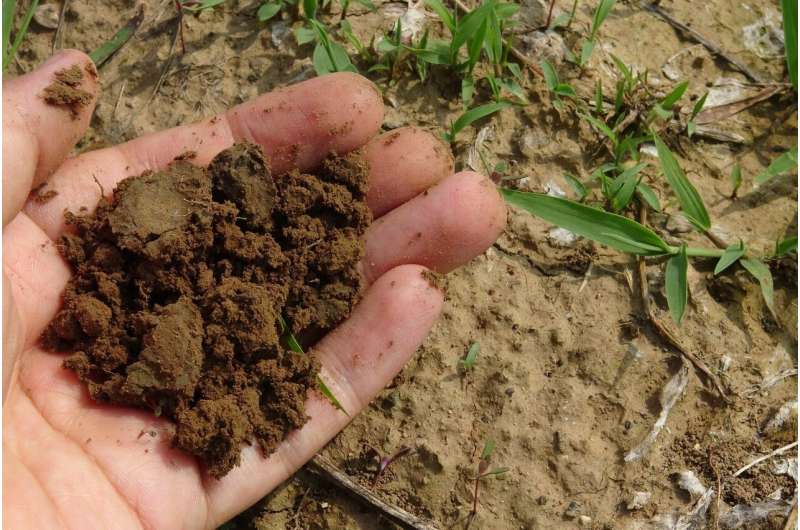This article has been reviewed according to Science X's editorial process and policies. Editors have highlighted the following attributes while ensuring the content's credibility:
fact-checked
trusted source
proofread
Research reveals minerals in soil shield microbial remains to aid carbon storage

A new study by Chinese researchers has revealed that soil minerals play a critical role in protecting the remains of dead microbes, thereby promoting carbon and nitrogen storage in the soil.
The study, published in Global Change Biology, uses artificial soils with different mineral compositions to examine their effect on the turnover of microbial residues, a major contributor to soil organic matter.
The results showed that clay minerals with specific structures, such as illite and montmorillonite, facilitated slower mineralization and desorption of microbial carbon and nitrogen compared to other clays such as kaolinite. Notably, the type of metal oxide present did not affect the turnover process.
Interestingly, the researchers observed a significantly faster turnover of microbial nitrogen compared to carbon. This was attributed to the high carbon-to-nitrogen ratio in the soil, which exceeds a threshold that incentivizes microbes to prioritize nitrogen uptake from residues to address nitrogen limitations.
Overall, the study highlights the importance of mineral protection as a long-term stabilization mechanism for microbial residues in soil. This understanding has implications for our understanding of soil organic matter dynamics and how it response to changing climate.
The study, led by scientists from the Institute of Applied Ecology of the Chinese Academy of Sciences, builds on a broader body of work exploring microbial-driven soil organic matter formation. Their previous achievements include quantifying microbial residue decomposition rates in forest soils, investigating the effects of temperature fluctuations on microbial residue stabilization and decomposition, and establishing links between microbial carbon use efficiency and residue formation.
In addition, they have developed a model that integrates microbial community composition, dead residue, and soil organic matter. Together, these efforts improve our understanding of the link between the microbial life cycle and soil organic matter transformation and provide valuable theoretical underpinnings for accurately assessing soil carbon sequestration potential.
More information: Xu Wang et al, Mineral composition controls the stabilization of microbially derived carbon and nitrogen in soils: Insights from an isotope tracing model, Global Change Biology (2024). DOI: 10.1111/gcb.17156
Provided by Chinese Academy of Sciences




















